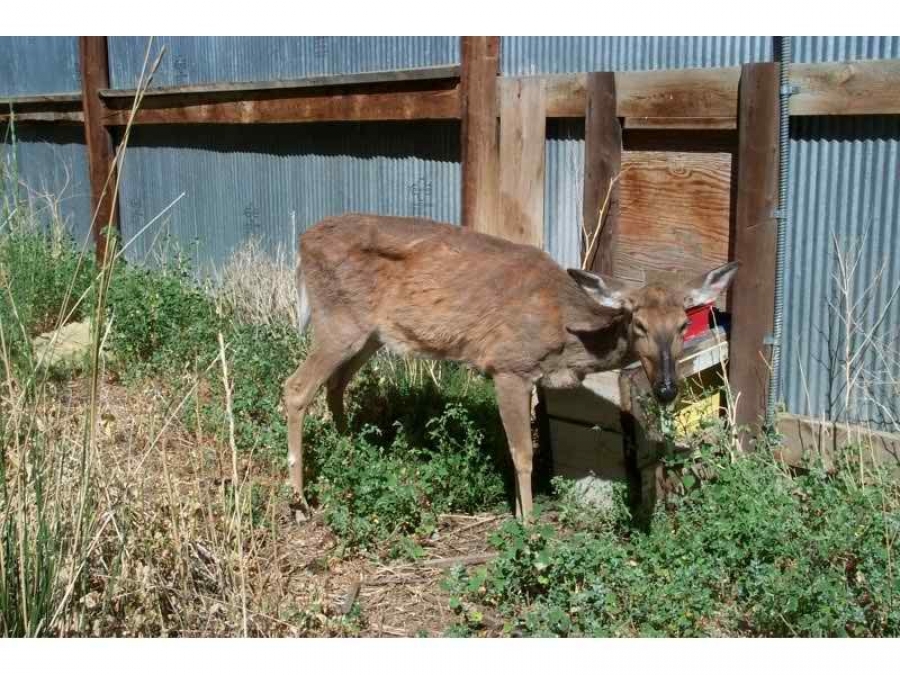Minnesota
MN Lawmakers seek stronger action against Chronic Wasting Disease

ST. PAUL, Minn. (AP) — Some Minnesota lawmakers want to crack down on deer farms as concern grows about the persistence of chronic wasting disease among wild deer in the southeast. They point to neighboring Wisconsin, where the fatal brain disease is well-established, as an example of what could happen if Minnesota fails to take more aggressive action soon.
Rep. Jamie Becker-Finn introduced a bill last week to require 10-foot-high double fencing around commercial deer and elk farms to prevent infected animals from spreading the disease to wild deer. The Roseville Democrat also plans to introduce a sure-to-be controversial measure to allow authorities to kill infected captive herds.
“I really can’t stress enough to folks that this is a disease outbreak and we need to address it as such,” Becker-Finn told The Associated Press. “That means addressing it on multiple fronts.”
The disease is caused by a misshapen protein called a prion. It spreads from animal to animal through saliva, feces or urine. Prions persist in the environment and remain infectious for years. While the disease hasn’t been shown to infect humans, health officials warn against eating infected animals.
It’s already widespread in parts of Wisconsin, where former Gov. Scott Walker’s administration came under criticism for largely monitoring the spread rather than launching any major efforts to stop it. Wisconsin did recently order fencing upgrades and ban hunters from taking carcasses out of affected counties. Wisconsin’s earlier attempts at eradication by encouraging hunters to kill as many deer as possible failed.
Department of Natural Resources officials painted a grim picture at the agency’s annual stakeholders roundtable this month. The disease has been confirmed in 34 wild deer since it appeared in 2016 in a hot zone between Preston and Lanesboro in Fillmore County.
The DNR has spent over $8.4 million on fighting the disease since 2002, when the state recorded its first case at an elk farm in Aitkin County of east-central Minnesota. Since 2016 the DNR has tested about 24,000 deer shot by hunters in southeastern Minnesota, and around 9,000 around an infected deer farm in Crow Wing County of east-central Minnesota. No wild deer have tested positive near that farm but the DNR is keeping the area under surveillance indefinitely.
“We don’t have the budgets to sustain this effort in the long term,” Lou Cornicelli, the DNR’s wildlife research manager, said at the conference. “We don’t have 100 years to be successful. We have a few years to be successful, and we’re concerned that we might have missed that window in Fillmore County.”
Craig Engwall, executive director of the Minnesota Deer Hunters Association, said his group is “keenly interested” in Becker-Finn’s proposals.
“We do think things need to happen this session,” Enwall said.
Becker-Finn and Rep. Rick Hansen, chairman of a House environment and natural resources committee, who supports her proposals, said that when outbreaks strike other farms — such as bird flu or bovine tuberculosis — authorities quickly eliminate the flock or herd.
While a Winona County deer farm voluntarily shut down and all seven of its animals were euthanized last year, the Crow Wing County farm, which Cornicelli called a “shooting pen,” is still operating, serving customers who come for canned hunts. Its continued operation rankles Becker-Finn and Hansen.
Engwall pointed out that the DNR’s extensive surveillance around infected farms is paid for by hunters and anglers through their license fees, and that none of the money comes from the captive deer-and-elk industry.
Becker-Finn said they have a decent chance of getting traction in the Democratic-controlled House, but it will be harder in the Senate, where the GOP holds a slim majority. But she said she’s spoken with several senators who are open to doing something.
Cornicelli said he’s concerned that Minnesota is already losing hunters because of fears about chronic wasting disease. He presented data showing that license sales in southeastern Minnesota fell 5.9 percent in 2017 and 4.1 percent in 2018, compared with statewide dips of 2.2 percent and 3.3 percent. In and around the official disease management zone, sales fell by 6.9 percent in 2017 and 4.6 percent in 2018.
That raises the DNR’s concerns about what happens to the ranks of deer hunters — and license revenues — if the disease spreads.
A major challenge in Fillmore County is that most of the land there is privately owned, and some landowners don’t support the DNR’s efforts. The department has held special late seasons there to encourage hunters to take more deer, and went as far as cold-mailing over 3,500 free permits to every landowner in the area with 20 acres or more.
“Disease management is tough,” Cornicelli conceded. “Not everybody agrees on what we should do.”







